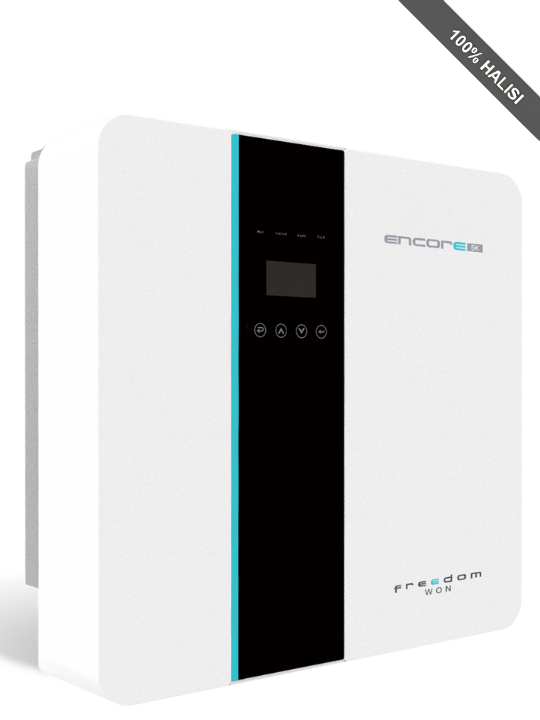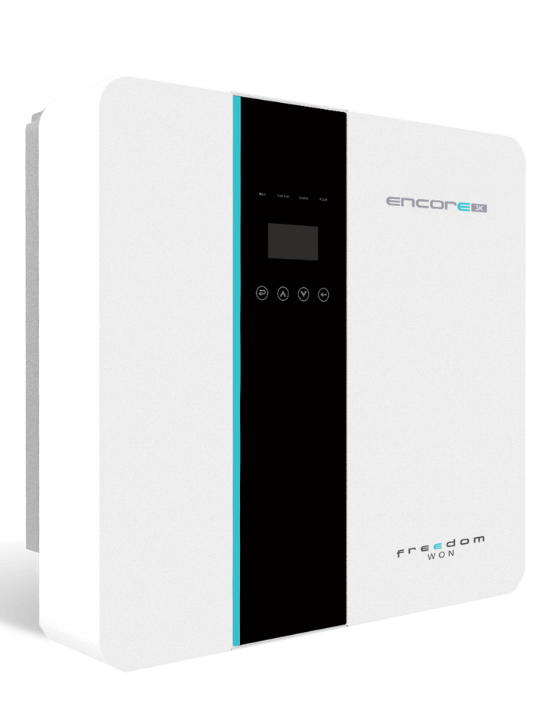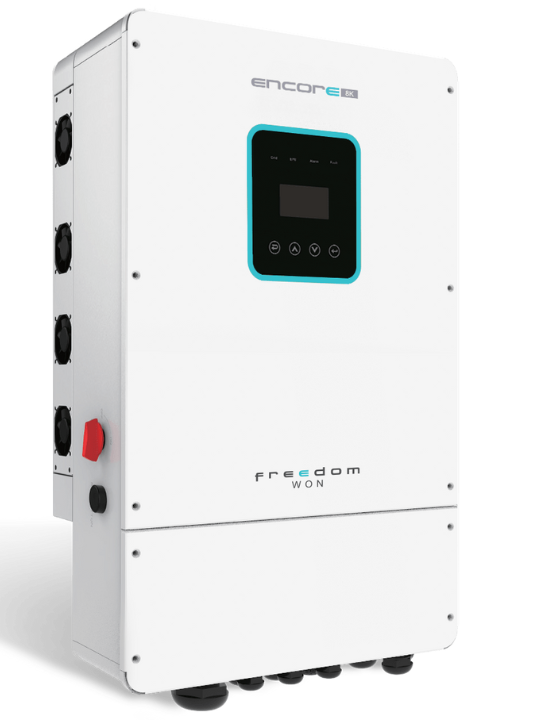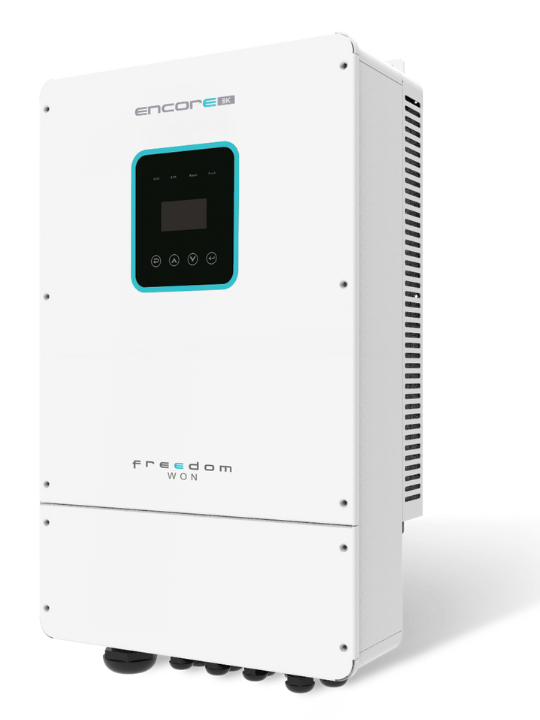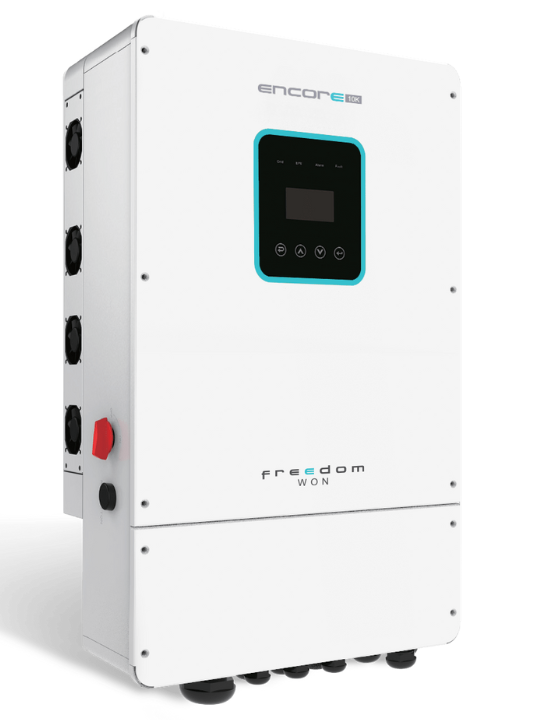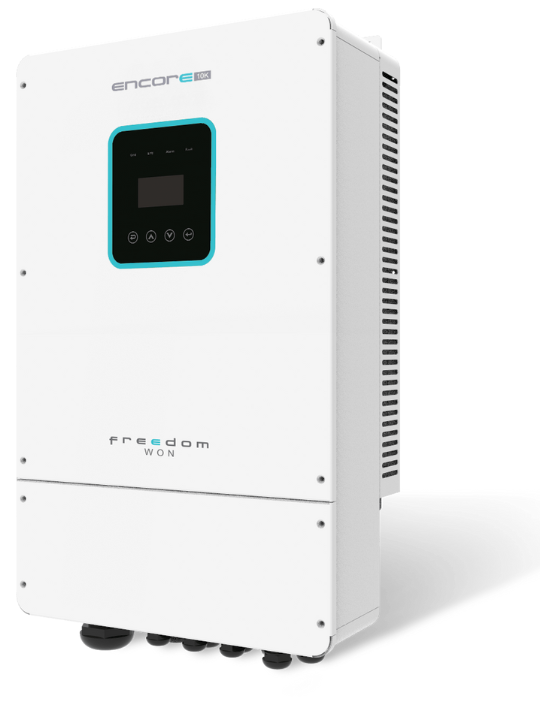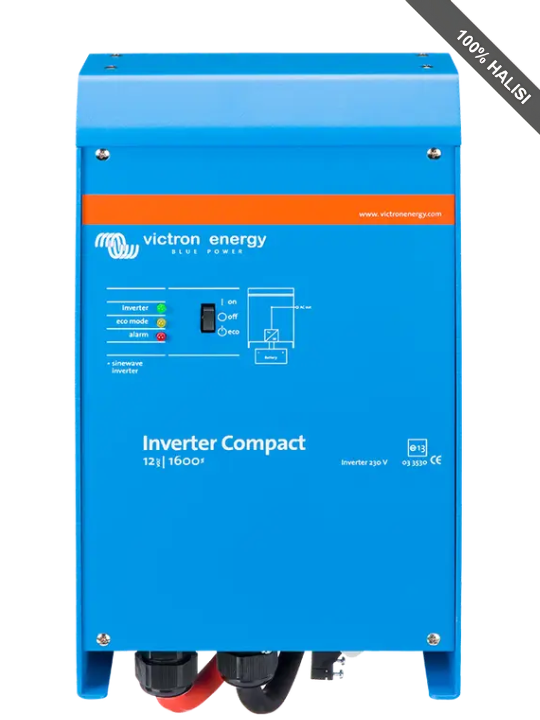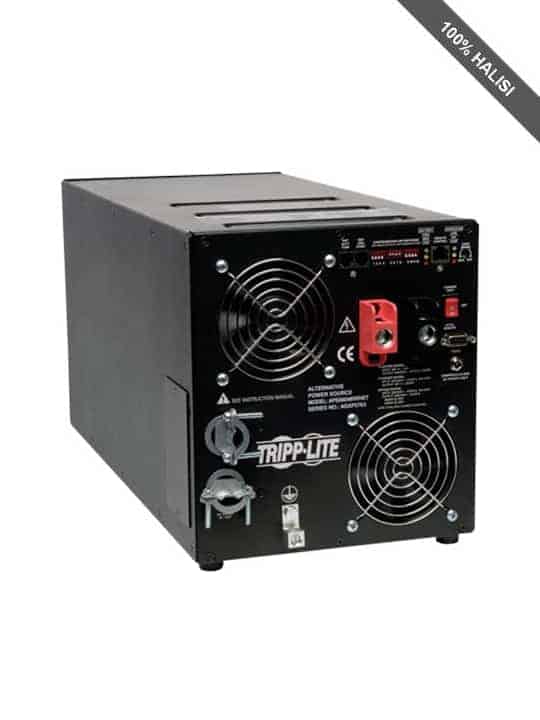The Freedom Won Encore Single Phase Hybrid Inverter series is a family of hybrid inverters (3 kVA → 10 kVA) designed for residential and small commercial solar + battery systems. These are single-phase units capable of combining solar PV input, battery storage, and grid (or generator) backup, with flexibility in battery type and system scaling over time. Key features include multiple MPPT inputs, high DC voltage operation, good charge/discharge currents, and robust protection. They aim to give users “energy freedom” — reliability during grid unreliability, ability to maximize self-consumption of solar power, and backup during outages.
Features & Benefits
- Multiple power sizes: You can choose a model that matches your needs and budget (household vs small business). Also allows future scaling—e.g. start small, upgrade panels or battery later.
- Wide PV input & multiple MPPTs: Enables more flexible solar array design (different panel orientations, shading, roof layouts). Maximises solar capture and reduces losses. Helps mounting more panels even if roof orientation varies.
- High efficiency: Less energy wasted; higher return on investment. More usable power from each solar watt which is especially important when PV resources are limited or capital is tight.
- Battery compatibility (Li & lead-acid): More options for local battery supply. Users can choose based on cost, availability, lifetime. Lithium offers longer life and less maintenance; lead-acid may be cheaper initially.
- Backup & fast switching (EPS): Protects against grid instability or outages. Keeps critical loads (lights, fridge, communications) running without interruption. Important in places with frequent power cuts.
- Robust design / environment tolerance: Durability under high heat, dust, humidity; less risk of failure. Lower maintenance and repair costs. Longer lifetime.
- Monitoring & communication: Ability to monitor system performance, spot faults or inefficiencies, adjust / optimise usage. Can help with warranty, maintenance. Also useful for service providers.
- Safety / regulatory compliance: Easier to get approvals, less risk of accidents or damage. Confidence for buyers. Insurance, import, and legal compliance becomes simpler.
Use Cases
Here are some scenarios in Tanzania where the Encore inverters could be particularly useful:
- Residential areas / homes with unreliable grid: Where grid power is intermittent, these hybrid inverters allow solar PV + battery systems to supply power during blackouts, while still using the grid when available.
- Small businesses / shops: For shops, clinics, guesthouses, etc. that need some continuous power (lights, refrigeration, communications) and cannot afford long downtime.
- Rural / off-grid or weak-grid locations: For villages or remote households where grid is weak or absent, these are good for PV + battery systems, possibly with generator backup.
- Self-consumption optimization: Users wanting to maximize use of solar generation, store surplus for evening/night use, reduce dependency on diesel generators or expensive grid tariffs.
- Demand charge reduction: In urban settings, to shift loads or reduce peak usage of grid supply and possibly to reduce electricity bills if there are time-of-use or peak demand charges.
Value Propositions
- Energy independence and reliability: Frequent power outages or voltage fluctuations are issues in many parts of Tanzania. A system with battery backup offers reliability.
- Cost savings over time: While initial investment is substantial, savings on diesel, grid import, or expensive utility tariffs can pay back over years, especially with high solar irradiance.
- Flexibility of sizing and scalability: Because the battery voltage is standard (around 48 V range), and the inverters support multiple battery types, vendors/installers in Tanzania can match batteries as per local supply (LiFePO4, or lead-acid) and scale later.
- Efficiency means less wastage / higher ROI: High MPPT efficiency, lower losses help in making better use of solar inputs — especially because solar hours are quite good in many parts of Tanzania.
- Support and warranties: Freedom Won gives good warranties (some 5 years, extendable) in South Africa. For Tanzania a good warranty & after-sales support network will be key. Products complying with IEC standards help with import approvals, safety, insurance, etc.
Local Market Positioning & Challenges
How these inverters might stack up or what to watch for in Tanzania context:
Strengths:
- Solar irradiance in Tanzania is quite favorable (lots of sun hours), so solar + battery systems are well-suited.
- Rising energy demand, unreliable grid power in many regions, frequent outages — strong demand for backup solutions.
- Growing awareness & incentive for renewable energy (government policies, NGOs, solar finance etc.).
- The scalability of these inverters helps households or small businesses start small (e.g., 3 or 5 kVA) and upgrade later.
Challenges / Considerations:
- Cost / Capital investment: The initial cost of inverter + batteries + solar panels is high; many users need financing, subsidies, or longer payback periods. Import duties, taxes, transportation affect price.
- Battery supply & cost: LiFePO4 or high-quality batteries may be expensive or harder to source. Battery lifetime, maintenance, and local availability are important.
- After-sales service & spare parts: For reliability, with remote or rural areas, service support, warranty repair, availability of technical expertise are critical.
- Grid standards & compatibility: Voltage fluctuations, surges, harsh environmental conditions (heat, dust, humidity) require rugged equipment, protection features, possibly customizations (e.g. stronger casing, cooling).
- Regulations: Local rules for grid-tie export, metering, safety certification, permits. Also tariffs for solar export back to grid.
- Competition: There are local and imported products, sometimes cheaper. Distinguishing on reliability, warranty, efficiency, support will be important.
Technical Specifications
| Specification |
Encore 3kW |
Encore 5kW |
Encore 8kW |
Encore 10kW |
| Rated AC Output Power |
3 kW / 3 kVA |
5 kW / 5 kVA |
8 kW / 8 kVA |
10 kW / 10 kVA |
| Max. AC Output (Surge) |
~4.6 kW |
~7 kW |
~12 kW |
~13 kW |
| AC Output Voltage / Frequency |
230 V, 50/60 Hz |
230 V, 50/60 Hz |
230 V, 50/60 Hz |
230 V, 50/60 Hz |
| Waveform |
Pure Sine Wave |
Pure Sine Wave |
Pure Sine Wave |
Pure Sine Wave |
| Battery Voltage Range |
40–58 V |
40–58 V |
40–58 V |
40–58 V |
| Max. Charge/Discharge Current |
~95 A |
~104 A |
~190 A |
~190 A |
| PV Input Voltage (Max.) |
500 V |
500 V |
500 V |
500 V |
| MPPT Voltage Range |
125–500 V |
125–500 V |
125–500 V |
125–500 V |
| No. of MPPT Trackers |
2 |
2 |
4 |
4 |
| Max. PV Array Power |
~7 kW |
~10.5 kW |
~16 kW |
~16 kW |
| Max. PV Input Current |
14 A × 2 |
14 A × 2 |
14 A × 4 |
14 A × 4 |
| Max. Efficiency (DC to AC) |
~97% |
~97% |
~97.2% |
~97.2% |
| MPPT Efficiency |
99.9% |
99.9% |
99.9% |
99.9% |
| Charge/Discharge Efficiency |
~95% |
~95% |
~95% |
~95% |
| Protection Features |
Over-voltage, under-voltage, overload, short-circuit, over-temp, reverse polarity, anti-islanding |
Same |
Same |
Same |
| EPS / Backup Switching |
<20 ms transfer |
<20 ms transfer |
<20 ms transfer |
<20 ms transfer |
| Ingress Protection |
IP65 |
IP65 |
IP65 |
IP65 |
| Operating Temperature Range |
–25°C to +60°C |
–25°C to +60°C |
–25°C to +60°C |
–25°C to +60°C |
| Communication Interfaces |
CAN, RS485, WiFi, LAN, DRM |
Same |
Same |
Same |
| Certifications |
IEC/EN 62109-1/2, CE |
IEC/EN 62109-1/2, CE |
IEC/EN 62109-1/2, CE |
IEC/EN 62109-1/2, CE |
| Weight (approx.) |
~32 kg |
~35 kg |
~41 kg |
~41 kg |
| Dimensions (H × W × D) |
~570 × 480 × 200 mm |
~570 × 480 × 200 mm |
~710 × 480 × 200 mm |
~710 × 480 × 200 mm |

